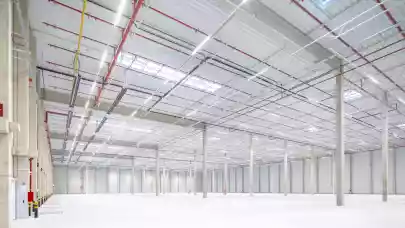
Compared to neighbouring Poland or Slovakia, rental prices for industrial properties in the Czech Republic can run up to one-third higher. Low vacancy rates and a small supply of immediately available space are forcing tenants to prefer more competitive offers from neighbouring countries, as shown in the regular quarterly industrial property market report published by Colliers.
A slowdown in the industrial property market marked Q1 2024. Gross realised demand dropped to its lowest level in 13 years and amounted to only 160,400 sqm. The number of completed lease transactions, their average size, and the size of the largest completed transactions fell well below the averages to which the market has become accustomed in recent years. Even net realised demand, which has been strong in recent years, has fallen. The total for Q1 2024 was 100,000 sqm. Demand was dominated by renegotiations (36%) followed by pre-lets (31%). Manufacturing companies were behind almost 50% of net realised demand.
A total of 148,100 sqm of new space was added and the total size at the end of March was 11,871,300 sqm. A further approximately 300,000 sqm of space is currently in shell & core status and awaiting completion once tenants for the spaces are found.
1,282,100 sqm of space is currently under construction. The share of speculative construction currently accounts for 46% of all projects under construction. In the Pilsen region, for example, the share of speculative construction was as high as 92%, while in Prague, the Moravian-Silesian and Ústí nad Labem regions it was around 50% (60% in Ústí nad Labem).
The vacancy rate rose slightly again during Q1 2024 and remains just above 2%. More and more subletting opportunities are emerging above the current vacancy rates. The latter are not counted in the official vacancy rate. In addition, there are several shell & core projects on the market that developers have started to build speculatively but which have not yet been brought to market. "If all of these spaces were counted in the vacancy rate, it would rise to 5% and would be close to the values in other countries in the region," says Josefina Kurfürstová, Analyst at Colliers, adding that the shell & core strategy is widespread in the Czech market especially. In neighbouring Poland or Slovakia, all speculative projects are usually put on the market as soon as they are completed, that is why the vacancy rate rises much more steeply there than in the Czech Republic.
Rents for the most desirable space on the market stabilised at €7.50 - 7.70 per sqm in Q1 2024, but due to strong competition from neighbouring countries and low demand, they can be expected to fall by 3 - 7% to just above €7 soon. "Rents for the most desirable spaces in Prague are still higher than in Vienna, for example, and in the regions, they run higher than in Poland or Slovakia. So as long as rents do not fall, manufacturing and logistics companies are unlikely to be aggressively pursuing leasing activity," comments Josefina Kurfürstová, adding that rents for office space are between €9.50 and 12.50 per sqm/month and service charges are typically €0.75 - 1.00 per sqm/ month.
It seems that the biggest threat to the Czech market is now competition from Poland. It offers approximately 30% lower rents compared to the Czech Republic and comparable transport infrastructure: especially in the regions bordering Germany. For example, rents in the Liberec region are €2.20/month/sqm higher than in the Polish border districts.



